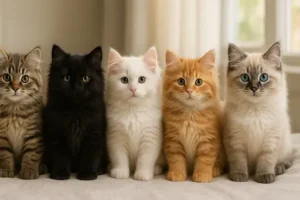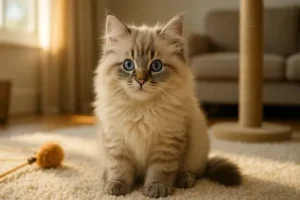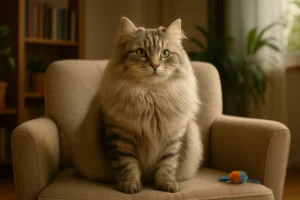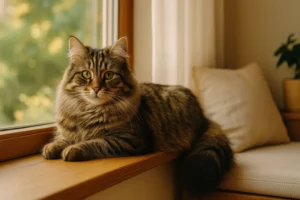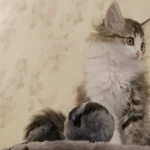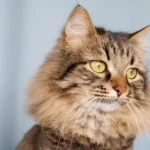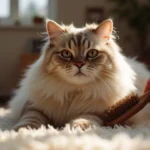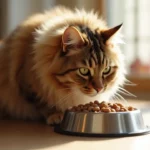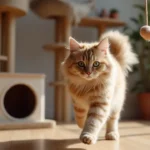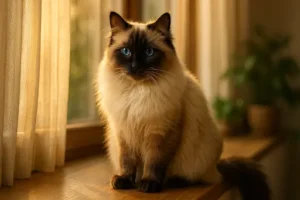
Siberian vs Norwegian Forest Cat: Complete Breed Comparison, Temperament & Grooming

When you are in the position where you need to choose between two magnificent cat giants-Siberian vs Norwegian forest cat, you are not the first person to be in that situation. Although both are long-haired forest breeds of exotic beauty with rough coats, there are certain differences between them that are significant. The Siberian is more gregarious, fun-loving and slightly smaller, and is in many cases, also the preference of an allergy-prone owner. The Norwegian Forest Cat would be bigger, more self-sufficient, and suitable for a quiet place with vertical climbing space.
We are going to compare all aspects of these beautiful cats, including physical features, and the possibility of allergies, so you can make a choice of which one to have in your home.
Key Highlights
- Siberians are affectionate, playful, and often better for allergy-sensitive owners due to lower Fel d 1 protein levels.
- Norwegian Forest Cats are larger, independent, and thrive in quiet homes with space to climb and explore.
- Siberians have a dense triple coat requiring more care, while Norwegians have a lower-maintenance double coat.
- Siberians are vocal and people-oriented; Norwegians are gentle, quiet, and take time to bond.
Origins and History
Siberian Cat: This is a Russian cat breed, which has always wandered through forests across the country, and endured brutal winters on a regular basis. The Siberian is a national treasure that is famous due to its endurance, mysticism, and rooted in Russian folklore.
Norwegian Forest Cat: There is a strong association between this breed of cat and the Viking ships, and this is so because they originated in Norway. The cat is a natural climber and frequently a hunter who is comfortable in the cold weather, although its fur is thick and waterproof. It is one of the oldest domesticated breeds of Europe.
Physical Comparison: Norwegian Forest Cat vs Siberian
| Feature | Siberian Cat | Norwegian Forest Cat |
|---|---|---|
| Size | Medium to Large (8–17 lbs) | Large (10–20 lbs) |
| Fur Type | Triple coat, plush & water-repellent | Double coat, long and thick |
| Face | Rounded with strong cheekbones | Triangular with straight nose |
| Eyes | Round, expressive | Almond-shaped |
| Tail | Thick, bushy, plume-like | Long, bushy, evenly tapered |
Want a deeper dive into Siberian cat size or how they compare to another fluffy favourite? Check our Maine Coon vs Siberian Cat guide.
Personality & Temperament

Siberians are loving, self-assured and very smart. Numerous owners have classed them as dog-like in their abilities to be loyal and playful. They enjoy playing around, and they tend to be adventurous and inquisitive.
Norwegian Forest Cats are less spirited and less independent. They are close to their families, yet not too clingy. Their natural climate is high, and they might enjoy resting in a high position instead of curling into your lap.
Which suits your lifestyle?
- Want a cuddly, confident companion? → Siberian
- Prefer a calm, regal presence? → Norwegian Forest Cat
Coat Care and Grooming Needs
Both breeds boast long, thick coats, but they differ in texture and maintenance:
Siberian Cat Grooming:
- Triple-layer coat
- Weekly brushing, more during seasonal shedding
- Use an undercoat rake for de-shedding
Norwegian Grooming:
- Double coat that tangles less
- Weekly brushing usually sufficient
Siberian cats occur with a great variety of coat types that range from classic tabbies to rare colour points, and they are often sold at prized values based on criteria such as rarity and lineage. Please find out more about the Siberian cat colors and their prices here.
Hypoallergenic Potential: Are Siberians Better for Allergy Sufferers?
Even though there are many claims that the Siberian produces less Fel d 1 protein, which is the primary cause of cat allergies, there is no such thing as a hypoallergenic cat, but some people with allergies respond better to Siberians.
Norwegian Forest Cats are not stigmatised with this reputation, and can produce varied allergy reactions. One should always take time with the breed before inviting them home.
Family Compatibility
The Siberians are loving, playful and outgoing people; thus, they are best suited in families with children or other pets. They are very social and have a reputation for trailing their humans all over the house, usually making playtime or cuddles.
The Norwegian Forest Cats are petite and patient, but softer. They will develop wonderful relationships with their families, but they might require more time to adapt to a new place or new people. They are more suitable in quieter houses or families with older children due to their calm nature.
These two breeds work well with families, but in case you are thinking of a cat that is engaged and readily adjusts to a busy household, as the Siberian cat is.
Health, Lifespan, and Vet Needs
Siberian Cats:
- Average lifespan: 11-18 years
- Prone to hypertrophic cardiomyopathy (HCM)
Norwegian Forest Cats:
- Average lifespan: 14-16 years
- Risk of hip dysplasia and glycogen storage disease
Routine vet visits and quality diets are essential for both breeds.
Adaptability and Living Environment
- Apartment Living: Siberians adapt well due to their playful, yet relaxed nature.
- Active Homes or Outdoor Access: Norwegian Forest Cats thrive when given vertical space and freedom to roam.
If space is limited, a Siberian may settle in more easily.
Cost & Adoption Options
| Breed | Average Kitten Cost |
|---|---|
| Siberian | $1,200 - $2,500 |
| Norwegian | $800 - $1,500 |
Always choose reputable breeders or check breed-specific rescues
Final Verdict: Which Forest Cat Is Right for You?
Choose the Siberian if you want:
- A social, affectionate, and interactive companion
- Potential hypoallergenic traits
- Better adaptability to smaller spaces
Choose the Norwegian Forest Cat if you want:
- A more independent, calm, and elegant feline
- A cat that loves heights and open spaces
- A breed with lower grooming intensity
In the end, both breeds are majestic, loving, and loyal. The choice lies in your lifestyle and preferences.
Final Thoughts
The discussion on Siberian vs Norwegian Forest Cat is not about which one is good, but which one is good for you. Having a fabulous, bold Siberian or gentle, elegant Norwegian cat is sure to bring much beauty, charm and an appurtenant companionship to your home.
FAQs
No, Norwegian Forest cats are usually bigger, particularly the males. Nevertheless, the size of the Siberian Cat remains remarkable and strong.
The Siberian could be superior since it produces less Fel d 1, but there will be subjective responses to this property.
Yes! Siberians are outgoing, and Norwegians are softly withdrawn.
The weight can range between 10 to 20 pounds, with the males tending to be on the high end of this scale as far as the Norwegian Forest Cats are concerned. These are really big and muscular cats with long, heavy bodies and large coats, thus adding to their overall size.
Norwegian Forest Cats can weigh between 10 to 20 pounds, with males often reaching the higher end of the scale. They are large, muscular cats with a long, sturdy frame and thick coat, contributing to their impressive overall size.
Yes, they can both get accustomed to apartment living as long as they are given vertical room, stimulus and contact. Siberians could be more flexible because they are sociable and playful.
Siberians are more talkative and expressive to their owners, regarding chirping and meowing. Norwegians are reserved and non-verbose when communicating.
Siberian Cat Info – Your trusted source for expert tips, breed facts, and care guides on Siberian cats.

